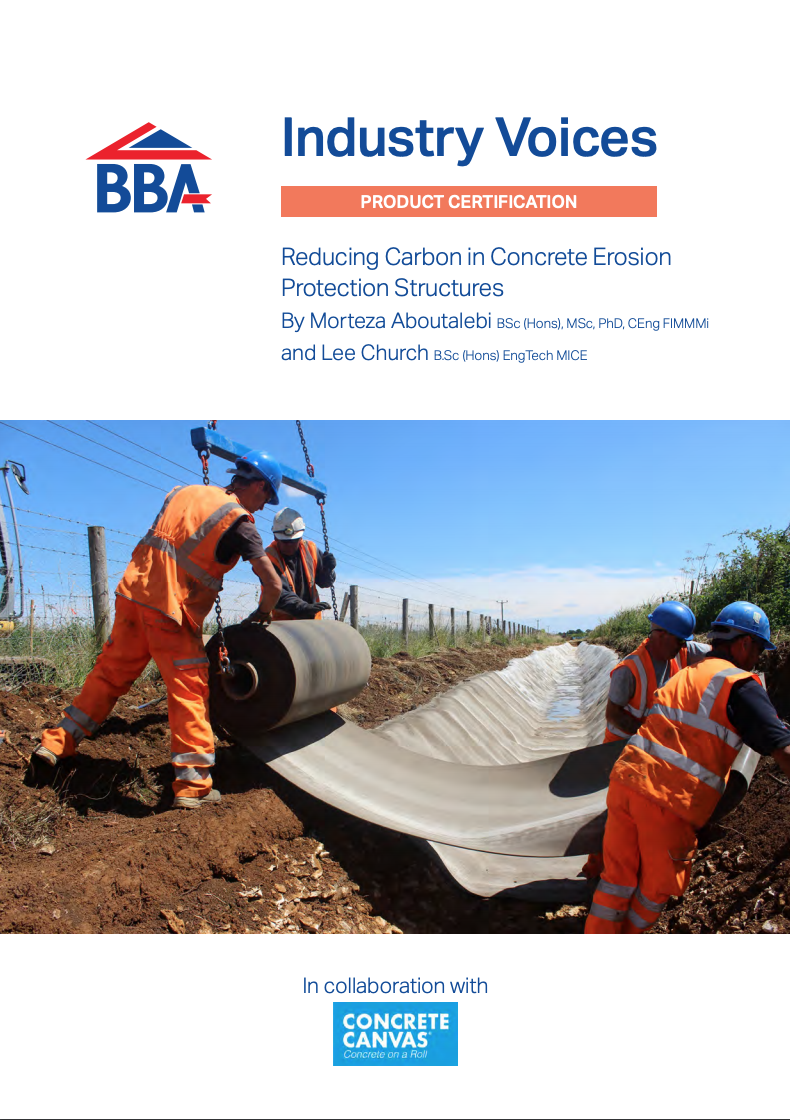A study by international consulting giant McKinsey shows that only 7% of people entering the professional world would select construction as their first choice industry to work in.
A study by international consulting giant McKinsey shows that only 7% of people entering the professional world would select construction as their first choice industry to work in.
Let that sink in. An industry that represents 7% of the economy and has a government backed pipeline of social and economic infrastructure projects worth £650Bn does not look like a good bet for young people starting their careers.
What is particularly frustrating is that many of the issues holding back the industry and making it unattractive for young people have been the subject of articles like this one for decades: an ageing workforce, a fragmented and fractious industry structure, low margins and investment in innovation, an inability to shake off the image of an all-male workforces in muddy boots on windy construction sites.
On top of these long standing trends Brexit and COVID 19 have made skilled professionals even harder to come by and created problems in the supply chain for key products and materials.
Using the industry’s challenges for as a catalyst for change
The construction sector clearly needs fundamental change to how it works and how it sells itself. Fundamentally, It needs to respond to Mark Farmer’s famous injunction back in 2016 to Modernise or Die.
It also desperately needs to see its challenges as opportunities and not threats. At BBA we have been bringing people together to tease out how we can make progress in areas including diversity and inclusion, future proofing via investing in skills and capabilities and helping businesses get started on tech-adoption.
Now we want to bring together business leaders from across the sector to identify how we can turn some of the big challenges of the 2020s into opportunities for positive change that in turn will make a career in construction much more attractive for people at the start of their working lives.
What are these challenges and opportunities? There are too many to cover in this short piece but here are three that could be a catalysts for far-reaching change.
Building Safety – a motor for finally embracing digitisation and Modern Methods of Construction?
The reputation of many parts of the industry have taken a well-deserved battering in the wake of the Grenfell tragedy and the light it has shone on our practices.
The Building Safety Act’s introduction of the concept of a golden thread of asset information to be passed between duty holders could however be the catalyst many have been waiting for to finally drive forward the adoption of digitisation and Modern Methods of Construction (MMC).
Building Information Management (BIM) and other digital solutions certainly make it easier to passively store and manage data. Perhaps more importantly they also provide tools to fully address fire safety at the design stage of projects and then ensure that what we build is what has been designed. In many cases that will be easier to achieve if we can utilise higher levels of manufactured construction. This can remove the risk of undocumented changes to the design that creeping in during the construction phase and undermining a buildings safety and performance.
If we can crack this for the high risk buildings covered by the Building Safety Act, we’ll have the evidence to drive adoption in other parts of the industry. The prize here could be huge. The Get it Right Initiative has estimated that avoidable error is costing the industry – or rather the country – £10-25Bn every year. Not only will this improve our image it can also be a spur for pulling more technologists and digital specialists into our industry
There isn’t enough cash or carbon to spare – will need to get serious about new materials and project delivery models
The UK is about to enter into recession, placing yet more pressure on public and private sector budgets. At the same time, the challenge of decarbonising our economy is not going away. In fact a recent legal challenge from green groups has resulted in the government being ordered to explain how its policies will deliver its own, legally binding 2050 Net Zero target. This is going to be a big challenge for important, construction intensive programmes like Roads Investment Strategy 3 and the New Hospitals Programme.
We can certainly expect renewed interest and funding for new products and materials. It is hard to imagine a route to Net Zero that doesn’t tackle the huge volumes of embedded carbon in the concrete and steel that make up so many of our structures. We’ll also need solutions that simply use less materials.
The cash and carbon crunch can also give a boost to the long running drive to adopt more collaborative, integrated delivery models that can better access the innovation that too often gets trapped in the lower tiers of the supply chain. Models such as the Infrastructure Client Group’s Project 13 are seeing major clients such as Anglian Water, create semi-permanent enterprises that bring key partners such as their pipework supplier right into the centre of decision making. Anglian’s Strategic Pipeline Alliance is helping the business and its whole supplier eco-system collaborate to achieve a shared set out outcomes around cost, carbon and performance over a multi-year programme.
Learning from Crossrail – a chance to embrace new forms of project leadership?
The industry – and the travelling public – have been celebrating the opening of the new Elizabeth Line. This has brought to an end one of the biggest projects of recent decades with its complex mix of tunnelling, station construction, technology development, system integration and many other factors. The project was however due to open in 2018 and is several billion pounds over budget. When flagship projects like this run into problems, the whole construction sector suffers.
The industry does however have an opportunity to look at what went wrong and put this right on future programmes of all shapes and sizes. The good news is that outgoing Crossrail CEO Mark Wild has made a real commitment to sharing what he has learnt. Mark is clear that Crossrail lost track (no pun intended) of its aspiration to embrace a level of strategic design management that would have allowed more Design for Manufacture and Assembly (DFMA) that drew on a suite of common components. As a result far too much installation, testing and commissioning had to take place in challenging conditions 25 metres under London – rather than in a factory. This is a big opportunity.
Mark’s headline learning from Crossrail is however that construction needs, “a new contemporary leadership style, one with transparency and owning the whole at its core”. Traditional transactional and hierarchical construction industry leadership styles now need to give way to a true systems approach with “every leader and team owning the whole of the system. Mark wants to see leaders at all level of projects “genuinely standing in the shoes of others” and for this to be backed by a culture of “ultra-transparency” to ensure that everyone involved has the sense of psychological safety that will allow them to work across organisational and contractual boundaries to actively seek out and solve problems.
Appealing to Generation Minecraft
Making these changes to culture and leadership may turn-out to be the most significant factor of all in turning around the industry’s image. Recent work by the Association for Consultancy and Engineering’s Emerging Professionals Group on the Future of the Workplace has shown how Generation Minecraft has very different attitudes to power and hierarchy. If we want to attract and keep younger professionals, we need to give them a strong voice, more opportunities to collaborate across teams and disciplines, and a strong focus on purpose as well as profit.
Are you interested in helping the industry evolve?
In September the next BBA industry roundtable will be looking at some of these and other opportunities to deliver a change in the industry’s image and performance. If you’d like to take part or you have a question or issue you think should be raised get in touch at [email protected]
Share This Story, Choose Your Platform!
Related News
A study by international consulting giant McKinsey shows that only 7% of people entering the professional world would select construction as their first choice industry to work in.
A study by international consulting giant McKinsey shows that only 7% of people entering the professional world would select construction as their first choice industry to work in.
Let that sink in. An industry that represents 7% of the economy and has a government backed pipeline of social and economic infrastructure projects worth £650Bn does not look like a good bet for young people starting their careers.
What is particularly frustrating is that many of the issues holding back the industry and making it unattractive for young people have been the subject of articles like this one for decades: an ageing workforce, a fragmented and fractious industry structure, low margins and investment in innovation, an inability to shake off the image of an all-male workforces in muddy boots on windy construction sites.
On top of these long standing trends Brexit and COVID 19 have made skilled professionals even harder to come by and created problems in the supply chain for key products and materials.
Using the industry’s challenges for as a catalyst for change
The construction sector clearly needs fundamental change to how it works and how it sells itself. Fundamentally, It needs to respond to Mark Farmer’s famous injunction back in 2016 to Modernise or Die.
It also desperately needs to see its challenges as opportunities and not threats. At BBA we have been bringing people together to tease out how we can make progress in areas including diversity and inclusion, future proofing via investing in skills and capabilities and helping businesses get started on tech-adoption.
Now we want to bring together business leaders from across the sector to identify how we can turn some of the big challenges of the 2020s into opportunities for positive change that in turn will make a career in construction much more attractive for people at the start of their working lives.
What are these challenges and opportunities? There are too many to cover in this short piece but here are three that could be a catalysts for far-reaching change.
Building Safety – a motor for finally embracing digitisation and Modern Methods of Construction?
The reputation of many parts of the industry have taken a well-deserved battering in the wake of the Grenfell tragedy and the light it has shone on our practices.
The Building Safety Act’s introduction of the concept of a golden thread of asset information to be passed between duty holders could however be the catalyst many have been waiting for to finally drive forward the adoption of digitisation and Modern Methods of Construction (MMC).
Building Information Management (BIM) and other digital solutions certainly make it easier to passively store and manage data. Perhaps more importantly they also provide tools to fully address fire safety at the design stage of projects and then ensure that what we build is what has been designed. In many cases that will be easier to achieve if we can utilise higher levels of manufactured construction. This can remove the risk of undocumented changes to the design that creeping in during the construction phase and undermining a buildings safety and performance.
If we can crack this for the high risk buildings covered by the Building Safety Act, we’ll have the evidence to drive adoption in other parts of the industry. The prize here could be huge. The Get it Right Initiative has estimated that avoidable error is costing the industry – or rather the country – £10-25Bn every year. Not only will this improve our image it can also be a spur for pulling more technologists and digital specialists into our industry
There isn’t enough cash or carbon to spare – will need to get serious about new materials and project delivery models
The UK is about to enter into recession, placing yet more pressure on public and private sector budgets. At the same time, the challenge of decarbonising our economy is not going away. In fact a recent legal challenge from green groups has resulted in the government being ordered to explain how its policies will deliver its own, legally binding 2050 Net Zero target. This is going to be a big challenge for important, construction intensive programmes like Roads Investment Strategy 3 and the New Hospitals Programme.
We can certainly expect renewed interest and funding for new products and materials. It is hard to imagine a route to Net Zero that doesn’t tackle the huge volumes of embedded carbon in the concrete and steel that make up so many of our structures. We’ll also need solutions that simply use less materials.
The cash and carbon crunch can also give a boost to the long running drive to adopt more collaborative, integrated delivery models that can better access the innovation that too often gets trapped in the lower tiers of the supply chain. Models such as the Infrastructure Client Group’s Project 13 are seeing major clients such as Anglian Water, create semi-permanent enterprises that bring key partners such as their pipework supplier right into the centre of decision making. Anglian’s Strategic Pipeline Alliance is helping the business and its whole supplier eco-system collaborate to achieve a shared set out outcomes around cost, carbon and performance over a multi-year programme.
Learning from Crossrail – a chance to embrace new forms of project leadership?
The industry – and the travelling public – have been celebrating the opening of the new Elizabeth Line. This has brought to an end one of the biggest projects of recent decades with its complex mix of tunnelling, station construction, technology development, system integration and many other factors. The project was however due to open in 2018 and is several billion pounds over budget. When flagship projects like this run into problems, the whole construction sector suffers.
The industry does however have an opportunity to look at what went wrong and put this right on future programmes of all shapes and sizes. The good news is that outgoing Crossrail CEO Mark Wild has made a real commitment to sharing what he has learnt. Mark is clear that Crossrail lost track (no pun intended) of its aspiration to embrace a level of strategic design management that would have allowed more Design for Manufacture and Assembly (DFMA) that drew on a suite of common components. As a result far too much installation, testing and commissioning had to take place in challenging conditions 25 metres under London – rather than in a factory. This is a big opportunity.
Mark’s headline learning from Crossrail is however that construction needs, “a new contemporary leadership style, one with transparency and owning the whole at its core”. Traditional transactional and hierarchical construction industry leadership styles now need to give way to a true systems approach with “every leader and team owning the whole of the system. Mark wants to see leaders at all level of projects “genuinely standing in the shoes of others” and for this to be backed by a culture of “ultra-transparency” to ensure that everyone involved has the sense of psychological safety that will allow them to work across organisational and contractual boundaries to actively seek out and solve problems.
Appealing to Generation Minecraft
Making these changes to culture and leadership may turn-out to be the most significant factor of all in turning around the industry’s image. Recent work by the Association for Consultancy and Engineering’s Emerging Professionals Group on the Future of the Workplace has shown how Generation Minecraft has very different attitudes to power and hierarchy. If we want to attract and keep younger professionals, we need to give them a strong voice, more opportunities to collaborate across teams and disciplines, and a strong focus on purpose as well as profit.
Are you interested in helping the industry evolve?
In September the next BBA industry roundtable will be looking at some of these and other opportunities to deliver a change in the industry’s image and performance. If you’d like to take part or you have a question or issue you think should be raised get in touch at [email protected]
Share This Story, Choose Your Platform!
Related News
Get in touch
Please complete the form below and we will contact you as soon as possible.
To help us to respond to your inquiry as quickly as possible, we have put a handy list of our services below.


